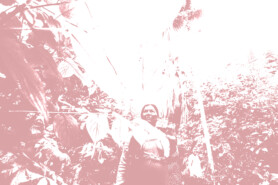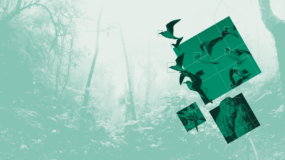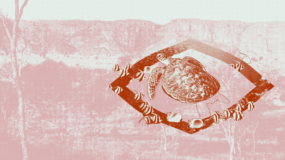Posted on 07 Jun 2024
India is home to between 50 and 60 per cent of Asia’s wild elephants. These majestic creatures are deeply intertwined with Indian life, playing a central role in religious ceremonies, cultural festivals and historical narratives. But despite their revered status, the current plight of India’s elephants stands in stark contrast to their once abundant presence in the country’s forests. Habitat loss and poaching are the main threats that have reduced the elephant population to a fraction of its former numbers.
Despite the global ban on ivory trade in 1989, the escalation of poaching incidents in India in the late 1990s signalled a crisis that required urgent attention. This surge in illegal activity posed significant challenges, which were exacerbated by India’s vast geographical expanse and the complexities of documenting poaching cases. The lack of a cohesive strategy to identify and apprehend offenders allowed poaching to continue unchecked, frustrating conservation efforts and leaving authorities struggling to find effective responses.
However, a pivotal moment came in 2015 with the launch of Operation Shikar, a landmark investigation into ivory poaching in India. This operation, led by officials from the Kerala Forest Department in collaboration with the Wildlife Trust of India (WTI), culminated in the arrest of a prominent ivory trafficker from New Delhi. The initiative has become a beacon of hope for India’s conservation efforts, demonstrating how technological advances and multi-stakeholder collaboration can have an effective impact on disrupting the illegal wildlife trade.
A digital transition
Faced with the ongoing challenges of combating poaching in the state of Kerala, the Forest Department sought to explore innovative methods to improve their enforcement capabilities. In 2015, they partnered with the WTI. Their collaboration marked the birth of a ground-breaking initiative aimed at revolutionizing wildlife crime investigation techniques.
Recognizing the need for a systematic approach, the joint team engaged a US intelligence analyst to identify shortcomings in their existing strategy. As a result, all known poaching cases in Kerala were meticulously documented and digitally archived, a departure from the previous paper-based record keeping methods that had been used.
Drawing on the expertise of an IT company, Leopard Tech Labs, known for having developed an innovative snake detection app, Sarpa, the team set out to develop a system capable of detecting patterns and trends in wildlife crime. Thus, the Hostile Activity Watch Kernel (HAWK) system was born – a cutting-edge wildlife crime intelligence gathering platform.
The HAWK system was a paradigm shift in wildlife crime prevention, harnessing digital technology and artificial intelligence to consolidate and analyze vast amounts of data. By identifying wildlife crimes by location and the factors that indicate criminal activity, HAWK enables law enforcement agencies to stay one step ahead of poachers.
The implementation of the HAWK system in Kerala has brought a number of benefits beyond its primary function of improving wildlife crime investigation techniques. One notable advantage has been the streamlining of data entry and report-generation processes. Unlike manual recording methods, where reports have to be painstakingly compiled by staff, HAWK allows new cases to be entered directly into the system. This has facilitated the automatic generation of reports, which can be produced quickly for legal proceedings, significantly speeding up the process.
The move to a digital system has also eliminated the need for labour-intensive manual transcription processes. Once a report is generated within the system, there is no need for additional manual transcription. Officers can simply review, sign and submit the report, certifying that the offence has been properly recorded. Furthermore, to ensure data integrity and prevent tampering, the original copy of each report can be securely downloaded for a limited period of time. At the end of this period, the report is stamped to indicate its authenticity, thus safeguarding against potential manipulation.
National roll-out?
Despite the obvious benefits of the HAWK system, the introduction of new technology is often met with resistance. The Forest Department addressed this by seeking input from stakeholders and incorporating it into the development of the system. This collaborative approach not only encouraged buy-in from other department staff, but also ensured that the software was continually improved to meet the evolving needs of its users.
The successful piloting of HAWK in Kerala’s Periyar Tiger Reserve further validated its effectiveness and paved the way for wider implementation. Following a presentation to senior officials of the Forest Department, HAWK was approved and subsequently mandated for use across the department.
In the coming years, the wealth of data generated by the HAWK portal is expected to play a crucial role in Kerala’s Forest Department’s efforts to combat wildlife crime. For example, a comprehensive data set on elephant poaching, capturing locations and times of incidents, can inform targeted conservation strategies and identify high-risk areas requiring increased protection, patrolling and monitoring.
Following Kerala’s lead with the HAWK technology, the neighbouring state of Karnataka has recently adopted the system, and the WTI is looking to adopt it in Tamil Nadu. Expanding the system across several states poses a number of challenges, including the need for technical training of staff in forest departments, infrastructure support issues in remote areas and the cultural-professional shift from paper-based to paperless systems. Political and bureaucratic hurdles are further obstacles, with resistance to transparency hampering progress. Nevertheless, there is optimism that the momentum will continue, fostering greater collaboration and support for forest departments across the country.
The implementation of the HAWK system marks a significant milestone in Kerala’s conservation journey and highlights the transformative potential of collaborative partnerships between government agencies, NGOs and technology innovators. Beyond its immediate impact on wildlife conservation, HAWK exemplifies the power of innovation to address complex conservation challenges.
This analysis is part of the ECO-SOLVE series of articles that aims to showcase solutions for monitoring and disrupting illicit environmental flows as well as strengthening international cooperation. ECO-SOLVE is a project implemented by the GI-TOC as part of the European Union’s Global Illicit Flows Programme.



